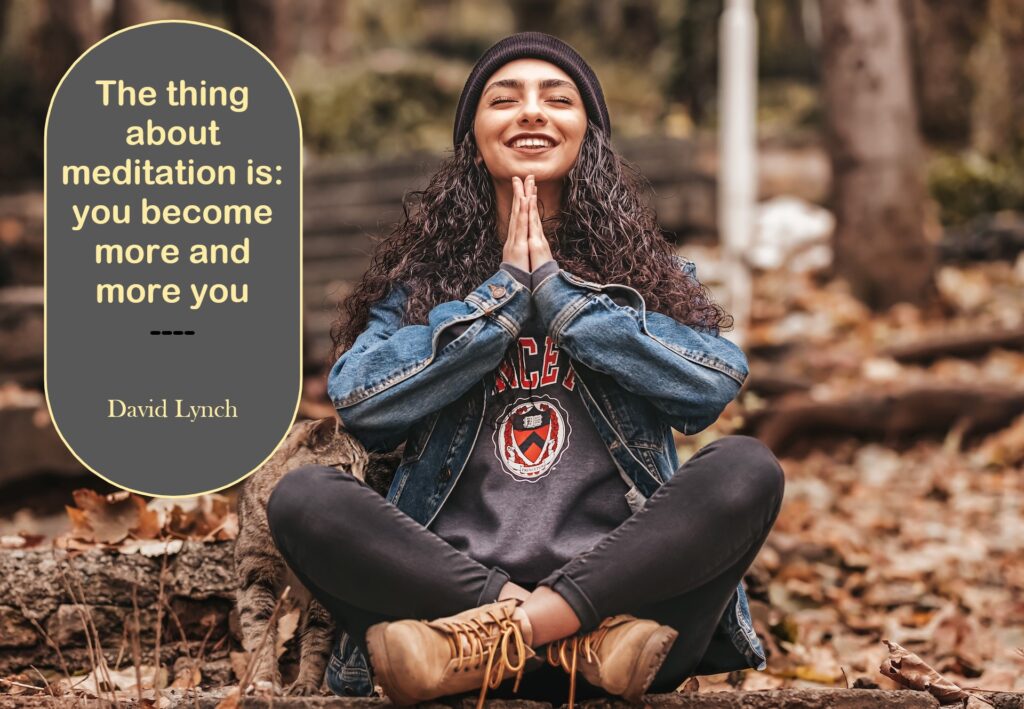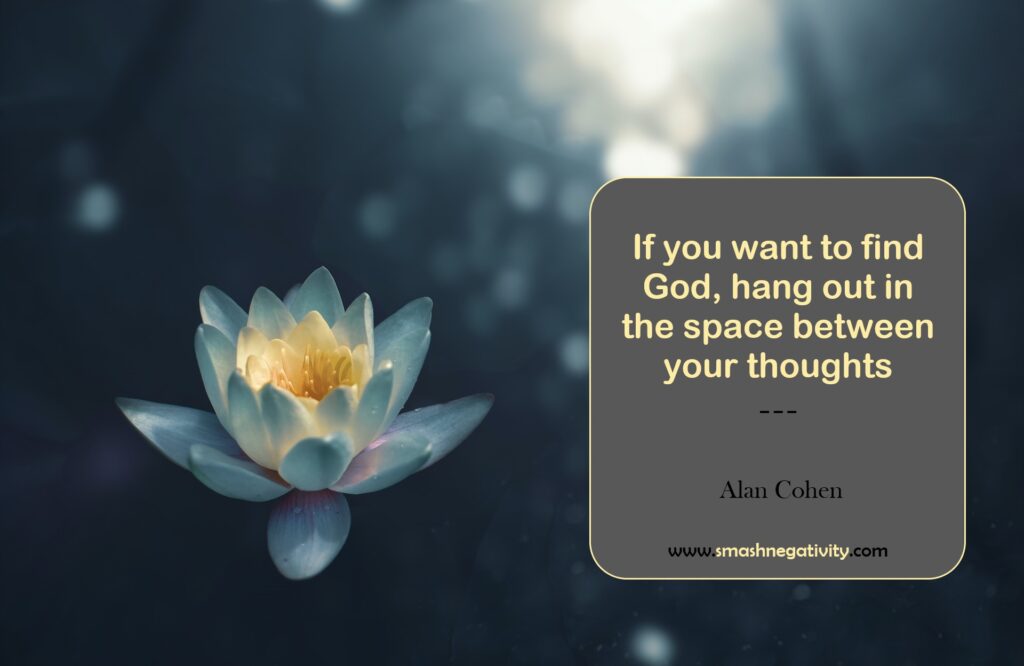Meditation is a practice that may be used to both still the mind and relax the body. It’s kind of like taking a break for your brain. Just as our bodies require relaxation, our minds need rest too. Meditation can calm and relax us.
When meditating, you sit or lie down in a quiet location and focus on your breath or a word or phrase you repeat to yourself. This helps you quiet your thoughts and let go of worries and distractions. It’s like pressing a pause button on all the thoughts that usually race through your mind.
Meditation helps us focus on the present and let go of extraneous thoughts. It’s not always easy at first, but it can become second nature if you remain consistent.
This article will teach you how to meditate and provide you with techniques to take your sessions to the next level.
How to meditate – Beginner Level
You will be able to learn how to meditate and incorporate it into your regular routine if you follow these five steps. The art really boosts physical, mental, emotional, and spiritual wellness. However, meditation is not a short-term solution or something that should be done once. It is a practice that requires discipline, consistency, and commitment. The more you meditate, the greater the benefits you’ll reap as a result. Let’s dive in!
1. Choose a time and place
The first step in meditating is to select a convenient time and location. Meditation should be calm, pleasant, and distraction-free. You can meditate anywhere you feel most comfortable—at home, at the workplace, in a park, or anyplace else that strikes your fancy. Depending on your schedule and choice, you can meditate anytime. Morning meditation helps some individuals start the day calmly and energetically. Others meditate at night to unwind.
Pick a suitable and regular time and location. Don’t meditate in a loud or busy area that distracts you, unless you’ve mastered it. You shouldn’t meditate at an irregular or hurried time either. Make the art of meditation a regular part of your schedule, even if it’s only 10 minutes a day.
2. Prepare your body and mind
The next thing you’ll want to do before beginning to meditate is to get both your body and your mind ready for the practice. You should be physically and psychologically ready to meditate. Prepare by doing these:
- Dress comfortably and loosely.
- Turn off or silence your phone and any other devices that might interrupt you.
- Use the bathroom if you need to and drink some water if you are thirsty.
- Find a comfortable posture that supports your spine and allows you to breathe freely. You can sit on a chair, cushion, floor, or even lie down if you prefer.
- Relax your muscles and release any tension in your body. You can do some gentle stretches or massage your neck and shoulders if you feel stiff.
- Take a few deep breaths and exhale slowly. Observe how your body feels and how your breath flows in and out of your nostrils.
- Set an intention for your meditation session. Ask yourself why you want to meditate and what you hope to gain from it. For example, you may want to meditate to feel more calm and peaceful or to increase your focus and creativity.
3. Pick a meditation technique
This step involves choosing a meditation method that is tailored to your own needs and interests. Meditation methods include mindfulness, scriptural, guided, and others. They all have their benefits. Try several methods until you discover one that works for you.
The practice of mindfulness meditation entails paying attention to the present moment without judgment or distraction. It is gaining popularity and is one of the most straightforward methods. To practice mindfulness meditation, choose an object of focus, such as your breath, a word, a sound, or a feeling. Bring your attention to the object of focus and observe it with curiosity and openness. Whenever your mind wanders away from the object of focus, gently bring it back without criticizing yourself.
Use a beginner-guided meditation app or website. Guided meditations are audio recordings that tell you what to do and where to concentrate your attention throughout your session. They are useful for getting started with meditation and maintaining interest and energy throughout the process.
4. Start meditating
The fourth step to meditating is to start meditating. Time your session using a timer or app. You may start with 5 minutes and then increase it as you get more comfortable and confident.
How to start meditating:
- Close your eyes or lower your gaze if you like them open.
- Take a moment to get comfortable with your position and calm your body and mind.
- Remind yourself of your intention and your technique.
- Begin to focus on your object of focus and follow the instructions of your technique.
- Be gentle and patient with yourself. Don’t worry about doing it right or wrong. Just do your best and enjoy the experience.
5. End your session
The fifth and final step to meditating is to end your session. You don’t want to abruptly stop meditating and jump into your next activity. You want to gently transition out of your meditation and bring some of the benefits and insights with you.
How to end your session:
- Open your eyes slowly and look around you. Observe your feelings and what you see, hear, smell, taste, and touch.
- Take a moment to express gratitude for yourself and for the opportunity to meditate. You can say “Thank you” or “I appreciate myself” or anything else that feels genuine and positive.
- Reflect on your session and what you learned from it. Ponder on what went well, what was challenging, what surprised you, what you enjoyed, etc. You can also journal your thoughts experiences and feelings during the exercise.
- Stretch your body and move around a bit. You can do some yoga poses, shake your limbs, or walk around the room.
- Resume your normal activities with a fresh and calm mind.
Next Level Meditation Techniques
These creative meditation techniques are perfect for taking your practice to the next level.
1. Visualize Like a Boss
First up, we have visualization. This technique is like creating your own personal movie in your mind. Pretty cool, right? If you’re feeling stressed, try visualizing a beach scene to help you relax. Imagine the sound of the waves, the feel of the sand between your toes, and the sun warming your skin. Ah, can you feel the stress melting away already?
2. Walk it Out
Sitting still isn’t for everyone, and that’s okay. That’s where walking meditation comes in! It’s the perfect solution for those of us who can’t sit still for more than two minutes. Simply find a quiet place to walk and focus on each step you take. Feel the sensation of your feet hitting the ground and the movement of your body. If your mind starts to wander, gently bring your attention back to your body and surroundings. You’re on your way to becoming a walking meditation pro!
3. Sound Off
Next up, we have sound meditation. This technique involves using sound to help you relax and focus your mind. Who knew music could be so therapeutic? Put on some headphones or blast your favorite tunes through your speakers. Choose a piece of music or a nature sound that you find relaxing and let yourself fully immersed in the sound. Just try not to break out in dance!
4. Scan Your Body
The body scan is like giving yourself a full-body massage without ever leaving your bed. Sounds amazing, right? Lie down in a quiet place, close your eyes, and focus your attention on each part of your body in turn. Start with your toes and work your way up to the top of your head. Pay attention to any tension or stress you’re holding in each part and release it as you go. Before you know it, you’ll be feeling more relaxed than a cat in a sunbeam.
5. Spread the Love
Last but not least, we have loving-kindness meditation. This technique is all about sending love and kindness to yourself and others. Aww, how sweet! Start by finding a quiet place to sit and repeat phrases like “May I be happy” or “May I be at peace” silently to yourself. Pass the sweet feeling alongside. You can also extend these phrases to others, like “May my loved ones be happy” or “May all beings be at peace.” Spread that love like it’s Nutella on toast!
Hope you gleaned some benefits as a beginner. Have it in mind that meditation isn’t for the faint-hearted, you’ve got to be disciplined to remain consistent. Whether you’re visualizing a beach scene, walking it out, getting lost in the music, scanning your body, or spreading the love, you’ll be feeling like a meditation boss in no time. So what are you waiting for? Let’s get meditating, my friends!




